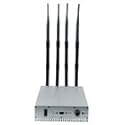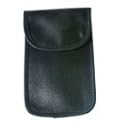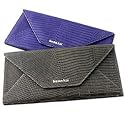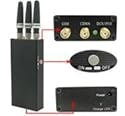How-To
Block Cellular Phone Signals

If you are a secret agent, cellular phones can pose a number of threats. They can be used to send or receive sensitive information. They can be used to remotely detonate a bomb wired to a phone. They can also be used to locate and track a person through GPS or cellular tower triangulation.
If you need to prevent a cell phone from sending or receiving signals, there are two basic ways to accomplish this.
Faraday cages
The first method is to use a Faraday cage -- a metal enclosure that blocks all electromagnetic signals, like the metal case of a microwave oven blocks the microwaves from getting out.

Faraday cages can consist of solid sheets of metal, such as copper, that completely cover a room or a smaller container, or a wire mesh whose spaces are smaller than the wavelength of the signal you are trying to block.
The Faraday cage method is effective if you need to prevent signals from entering or leaving a specific area, such as a single room or building, or if you place a device inside a Faraday-shielded container. An example of such a container is a cell-phone pouch, which physically blocks radio signals from being sent and received by the enclosed device, guaranteeing that no one can track your phone, or send signals to or from the phone.

A similar enclosure is the RFID-shielded wallet, which prevents radio transmissions to and from any RFID chips that may be embedded in enclosed credit cards, company key cards, passports, or any other ID cards that contain computer chips. A credit card sleeve is also available for blocking signals to individual credit cards with RFID chips.

Cell-phone jammers
The second method of blocking cell phone signals in a specified area is to use a cell-phone jammer, which transmits radio signals in the same frequency bands as most cell phones, creating enough interference to prevent nearby cellular phones from establishing signals between them and the closest cellular towers. This method is useful when you need to establish a mobile area of cellular jamming -- unlike a Faraday cage, which is effective only for devices enclosed within it. Cell-phone jammers can be placed in buildings, in automobiles, or carried in your pocket powered by batteries.

Cell-phone jammers have a number of different power levels, which determine the radius of the effective jamming area, and operate on different frequencies, which determines the types of phone signals they will block.
Due to their radio-frequency interference, cell-phone jammers are illegal in most of North America, Europe, Asia, and Australia, so they should be used with discretion.

Related links
|